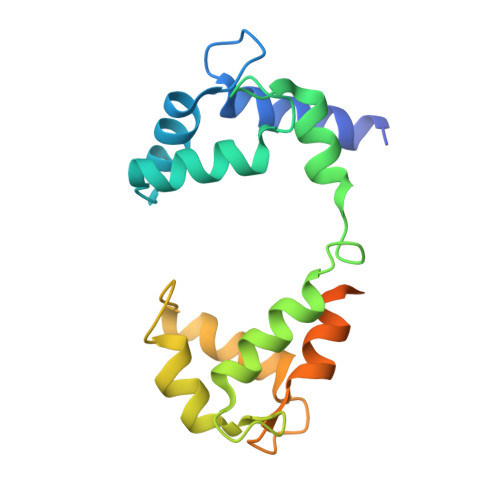Ligand activation mechanisms of human KCNQ2 channel.
Ma, D., Zheng, Y., Li, X., Zhou, X., Yang, Z., Zhang, Y., Wang, L., Zhang, W., Fang, J., Zhao, G., Hou, P., Nan, F., Yang, W., Su, N., Gao, Z., Guo, J.(2023) Nat Commun 14: 6632-6632
- PubMed: 37857637
- DOI: https://doi.org/10.1038/s41467-023-42416-x
- Primary Citation of Related Structures:
8IZY, 8J00, 8J01, 8J02, 8J03, 8J04, 8J05, 8W4U - PubMed Abstract:
The human voltage-gated potassium channel KCNQ2/KCNQ3 carries the neuronal M-current, which helps to stabilize the membrane potential. KCNQ2 can be activated by analgesics and antiepileptic drugs but their activation mechanisms remain unclear. Here we report cryo-electron microscopy (cryo-EM) structures of human KCNQ2-CaM in complex with three activators, namely the antiepileptic drug cannabidiol (CBD), the lipid phosphatidylinositol 4,5-bisphosphate (PIP 2 ), and HN37 (pynegabine), an antiepileptic drug in the clinical trial, in an either closed or open conformation. The activator-bound structures, along with electrophysiology analyses, reveal the binding modes of two CBD, one PIP 2 , and two HN37 molecules in each KCNQ2 subunit, and elucidate their activation mechanisms on the KCNQ2 channel. These structures may guide the development of antiepileptic drugs and analgesics that target KCNQ2.
Organizational Affiliation:
Department of Biophysics and Department of Neurology of the Fourth Affiliated Hospital, Zhejiang University School of Medicine, Hangzhou, Zhejiang, 310058, China.
















